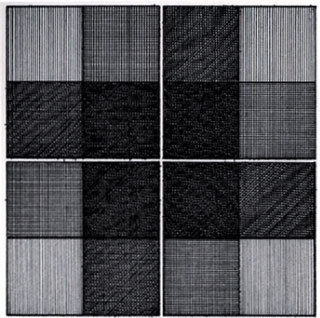It’s not that we didn’t expect to see Chuck Close at Dia:Beacon, the contemporary art showcase on the banks of the Hudson River. We just didn’t expect for the artist to roll up to the table next to us outside the café there, waiting for his egg salad sandwich.
But it seemed like a serendipitous start to an electrifying afternoon. Dia is a nonprofit art foundation based in New York City with site-specific projects around the U.S. And the Riggio Galleries at this site comprise of a 300,000-square-foot, former box-printing facility and another expanse of surrounding park. The six-year-old museum was engineered by then Dia diretor Michael Govan—the boy wonder who, thankfully, is now spreading his magic at the Los Angeles County Museum of Art.
Artist Robert Irwin oversaw the master plan of the landscape and brick building, and it’s a serene setting to spend a few sunny hours even just reading at one of the café tables or, inside, plopped on one of the several cushy grey sofas, getting lost in the work on display.
There’s much to love at this Dia, the cavernous, naturally lit space notwithstanding.
Among the most mind-blowing is the collection by Sol LeWitt. Once a draftsman for architect I.M. Pei, his geometric and line drawings in graphite and colored pencil are as playful as they are profound and put him among the champions of Conceptualism and Minimalism. This exhibition disappears, literally, this November, so if there’s anyway to experience it, do. These are the last LeWitt personally chose since he died some eight months after the show opened. Once the walls are painted over, this installation no longer exists.
For us, other standouts: Michael Heizer’s North, East, South, West, four 20-foot deep, steel-encased holes in the ground that had me personally clinging to the wall for a while; the loft filled with sculptures by Louise Bourgeois, including (of course) her colossal spider. I also really liked Dan Flavin’s “monuments” to V. Tatlin, a series of Mercury fluorescent tubes arranged in graphic configurations; Andy not so much.
As for Chuck Close, while none of his work currently hangs on the walls at Dia, we saw plenty of him throughout the place, including within one of the narrower channels inside Richard Serra’s Doubled Torqued Ellipse, an awkwardly tight moment that he poked at, joking, “This is one way to get personal with the work.” And the artist.
Photo Credits:
LeWitt: Estate of Sol LeWitt/Artists Rights Society (ARS), New York.
Exterior: R. Apodaca
Heizer: Tom Vinetz
Serra: Richard Barnes
Leave a Comment

